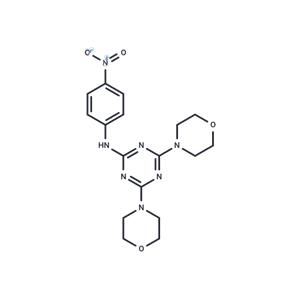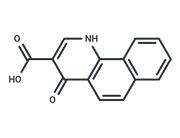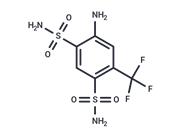| Name | MHY1485 |
| Description | MHY1485 is an mTOR activator that is cell-permeable. MHY1485 inhibits autophagosome and lysosome fusion, leading to accumulation of LC3II proteins and increased autophagosomes, thereby inhibiting cellular autophagy. |
| Cell Research | MHY1485 is dissolved in DMSO and then diluted with appropriate media[3]. MC3T3-E1 cells are maintained in Dulbecco's modified Eagle's medium (DMEM) supplemented with 10% fetal bovine serum (FBS), 100 U/mL penicillin and 100 mg/mL streptomycin at 37°C in a humidified atmosphere of 5% CO2. Having reached 70% confluence, the culture medium is switched to commercial osteogenic differentiation medium. MC3T3-E1 cells are cultured in the osteogenic differentiation medium for 14 days, following by culture in DMEM supplemented with varying concentrations of liraglutide (catalog no. HY-P0014; MedChem Express) for a further 14 days. MC3T3-E1 cells treated with 4 nM liraglutide are cultured in the presence or absence of Compound C or MHY1485. MC3T3-E1 cells maintained in DMEM for 28 days in the absence of any treatment are used as the negative control (NC); cells cultured in commercial osteogenic differentiation medium for 14 days and in DMEM without liraglutide for an additional 14 days are used as the positive control (PC)[3]. |
| Kinase Assay | Ovaries from mice at day10 of age are treated with 10 μM MHY1485 for 3h and proteins are extracted using M-PER Mammalian Protein Extraction Reagent containing a protease inhibitor cocktail. Protein concentrations in supernatants are determined by the bicinchoninic acid method. Equal amounts of protein lysates are loaded on 4-12% NuPAGE Bis-Tris gels in MOPS buffer and transferred to 0.45 μM pore nitrocellulose membranes[2]. |
| In vitro | METHODS: MDA-MB-231, BT-20, MDA-MB-468 cells and T cells were co-cultured and treated with Atezolizumab (50-100 µg/mL) for 4-24 h. T cell-mediated cytotoxicity assay was performed.
RESULTS: Atezolizumab significantly enhanced T cell-mediated cytotoxicity of MDA-MB-231 cells in a dose-dependent manner, with 100 µg/mL concentration of Atezolizumab showing significant efficacy at 4 and 24 h incubation. Similar results were obtained with BT-20. No Atezolizumab-induced T cell-mediated cytotoxicity was observed in PD-L1- MDA-MB-468 cells compared to MDA-MB-231 and BT-20 cells. [1]
METHODS: MDA-MB-231 cells were treated with Atezolizumab (0.5 µg/mL) for 24 h. Surface expression of PD-L1 was detected by flow cytometry.
RESULTS: Almost all MDA-MB-231 cells were positive for PD-L1, but detection of PD-L1 epitopes was blocked by the specific antibody Atezolizumab after 24 h treatment. [2] |
| In vivo | METHODS: To detect in vivo antitumor activity, Atezolizumab (10 mg/kg) and Bevacizumab (5 mg/kg) were intraperitoneally injected into BALB/C nude mice bearing A2780cis xenografts every two days for three weeks.
RESULTS: In vivo treatment with Atezolizumab or Bevacizumab induced significant antitumor effects and significantly inhibited tumor growth. Dual blockade with Atezolizumab and Bevacizumab significantly inhibited tumor growth compared to each treatment. [3] |
| Storage | Powder: -20°C for 3 years | In solvent: -80°C for 1 year | Shipping with blue ice. |
| Solubility Information | H2O : < 1 mg/mL (insoluble or slightly soluble)
Ethanol : < 1 mg/mL (insoluble or slightly soluble)
DMSO : 3.87 mg/mL (10 mM), Sonication is recommended.
|
| Keywords | cell | MC3T3-E1 | MHY1485 | Autophagy | FSH | MHY 1485 | mTOR | Inhibitor | cell-permeable | Mammalian target of Rapamycin | inhibit | MHY-1485 |
| Inhibitors Related | Stavudine | Xylitol | Myricetin | Sodium 4-phenylbutyrate | Hydroxychloroquine | Guanidine hydrochloride | Taurine | Curcumin | Oxyresveratrol | Paeonol | Naringin | Gefitinib |
| Related Compound Libraries | PI3K-AKT-mTOR Compound Library | Neural Regeneration Compound Library | Target-Focused Phenotypic Screening Library | Bioactive Compound Library | Kinase Inhibitor Library | Glutamine Metabolism Compound Library | Inhibitor Library | Neuroprotective Compound Library | Anti-Aging Compound Library | Bioactive Compounds Library Max |

 United States
United States



